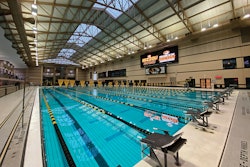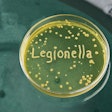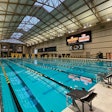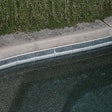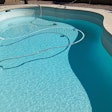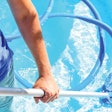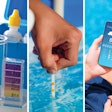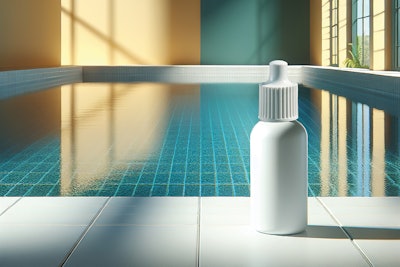
The most important task in operating a swimming pool or hot tub is maintaining a safe environment for users. This entails managing a variety of hazards concurrently such as limiting access to authorized users, elimination of suction and entrapment hazards, ensuring that all appropriate safety equipment is continuously available, prevention of unauthorized access to treatment chemicals, and the prevention of Recreational Water Illnesses (RWIs). This article is the first installment in a two-part series on RWIs. Part one will discuss infection prevention. Part two will discuss illnesses from exposure to disinfection byproducts and improper water balance.
Infectious RWIs are illnesses caused by exposure to improperly treated water, whether through swimming, soaking or inhaling water mist or vapors. For the last few decades, a spotlight has shined brightly on those germs that cause gastrointestinal illness. Among these pathogens are E. coli, Shigella, Giardia, Cryptosporidium (Crypto) and Norovirus. Every year, there are reports regarding cases of gastrointestinal illness stemming from public swimming pools. However, a recent article from the CDC extrapolated, from reported data, that of the estimated 5.61 million illnesses associated with recreational water, about 80% of these illnesses were due to swimmer’s ear (otitis externa) while 19% of illnesses were gastrointestinal.1 The leading cause of swimmer’s ear is the bacterium Pseudomonas aeruginosa. All the germs that cause RWIs, except for Crypto, are readily controlled by 1 ppm of free chlorine. The number and type of RWIs demonstrates the importance of maintaining an adequate disinfectant concentration.
It is not possible to simply look at the water and see if there are any germs present. The smallest microbe that a human can see is about 0.1 mm long. The largest germ that causes RWIs is the Giardia cyst, and it is 10 to 15 um long. In other words, the Giardia cyst is about seven times smaller than humans can see. Cryptosporidium oocysts are half the size of Giardia cysts, and bacteria are a tenth the size of Giardia.
With the germs that cause gastrointestinal distress, E. coli, Shigella, Giardia, Cryptosporidium and Norovirus, swallowing between 10 and 100 of these pathogens can cause an individual to become sick. It takes 1,000 to 10,000 cells to cause Pseudomonas or Legionella illnesses, but even with these germs, the water will appear clear. Relying on the appearance of the water is not a dependable or safe method for management.
What should operators be doing if simply looking at the water is not adequate? Regular, repeated water testing is the most important safety precaution that pool operators can take to prevent RWIs. To ensure there is enough free chlorine, a DPD test kit must be used. When DPD or FAS-DPD (a type of DPD) kits are used, any chlorine present will make the sample turn pink/red. There is another type of test kit (OTO) where the water turns yellow with chlorine. OTO kits are not acceptable for public pools and have not been considered reliable for public health monitoring since 1975. Many different brands of test strips are readily available and will provide some estimate of the free chlorine concentration, but test strips are not precise enough for public pools and must be avoided.
To maintain sanitized water and prevent RWIs, certain requirements must be met. At least 1 ppm of free chlorine, a pH between 7.2 to 7.8, and a cyanuric acid (CYA) level of 100 ppm or lower. The free chlorine, pH and CYA must be checked routinely and adjusted as needed. If either free chlorine or pH is out of range, the pool must be closed for use until the concentration(s) are within range. The frequency of testing should be sufficient to ensure that free chlorine, pH and CYA remain within range, and adherence to local pool code requirements is essential, especially for public pools. Additionally, water balance parameters, such as total alkalinity, calcium hardness and TDS, are important. They may impact disinfection if they allow pH to fluctuate out of range. It is safe to swim when they are out of range as long as the free chlorine and pH are in range, as they are the two most critical parameters. Water balance can be checked less frequently than free chlorine and pH.
How much chlorine is the correct amount to prevent RWIs? Unfortunately, there is no easy answer to this question. For lightly used pools like residential ones and many hotel, apartment, condominium and HOA pools, 1 ppm for pools not using cyanuric acid, or 2 ppm when cyanuric acid is used, is normally all that is required. However, once the bather load increases, such as with a pool party or swim meet, the minimum concentration before the event starts must be higher. This is because a large influx of swimmers can and will readily deplete the free chlorine concentration. The perspiration, urine, sunscreens and skin surface of the swimmers all are organic compounds that react with free chlorine. Once the free chlorine concentration drops, any fecal germs shed by the swimmers or Pseudomonas cells liberated from the traces of biofilm are suddenly available to possibly induce illness.
A free chlorine concentration of 1 ppm for pools not using cyanuric acid or when cyanuric acid is less than 50 ppm, or 2 ppm when cyanuric acid is used at 50 ppm or more, is the minimum that must be maintained at all times and in all areas of these bodies of water. This must not be interpreted as the desired target for normal operation. The best practice to prevent RWIs is to establish a higher concentration overnight so that it is available to oxidize the organic load introduced by the swimmers. This is because many feed systems are not able to supply substantial amounts of chlorine during rapid increases in bather loads. The maximum concentration of free chlorine must comply with the product label directions. Swimmers may reenter the body water when the free chlorine concentration falls below 4 ppm. For knowledge of industryaccepted standards, refer to ANSI/ APSP/ICC-11 2019 American National Standard for Water Quality in Public Pools and Spas.
The 1 ppm minimum concentration of free chlorine is well supported in U.S. pools from two different viewpoints. Scientific literature has reported numerous outbreaks of E. coli, Shigella, Pseudomonas, Giardia and Norovirus during the past 50 years. But there is not a single documented case of any one of these germs causing illness when at least 1.0 ppm of free chlorine was measured in the water. A separate study from Australia also concluded that these chlorine-sensitive germs will be adequately controlled by 1.0 ppm of free chlorine. The one exception to this is Cryptosporidium. Crypto cannot be controlled by normal concentrations of free chlorine, with or without the presence of cyanuric acid. If Crypto is a concern, such as in wading and therapy pools, an adequately sized Secondary Disinfection System described in ANSI/ APSP/ICC-11 2019 American National Standard for Water Quality in Public Pools and Spas must be installed.
It is not uncommon to encounter stories describing algae as sources of RWIs. There are no documented cases of illnesses from the types of algae that grow in swimming pools. Some individuals claim that algae can harbor RWI-causing germs such as E. coli. While this is theoretically possible, it has never been documented. If the water is turbid and green, the probable cause is “green algae.” Green algae are easily controlled by low concentrations of free chlorine, so where it is found, there is a high likelihood that there is less than 1.0 ppm of free chlorine in the water. Mustard and black algae are considerably more difficult to control due to their physical structure as well as their stationary growth pattern on the pool surface. To control both mustard and black algae, it is essential that the area be rigorously brushed and the concentration of free chlorine be elevated. The brushing disturbs the algal colony and helps to increase the contact of the cells with the chlorine. It also removes the surface layer of growth and permits the chlorine to contact the deeper buried algal cells still attached to the surface.
Are there any occasions where visual appearance alone confirms the lack of free chlorine? Yes, but they are limited. The first is when the water is dull or slightly cloudy. In this case, the root cause could be low chlorine or a filtration and circulation issue. Both must be addressed. The other is with green algae. When the water is turbid and green with algae, it is a safe bet that there is less than 1 ppm of free chlorine. Other than these two occasions, testing is the only way to ensure that adequate disinfection is present to control RWIs.
Ultimately, a pool operator’s goal is to prevent RWIs by establishing and maintaining proper disinfection measures. Diligent, repeated water testing is vitally necessary, and a conscientious operator will never rely solely on visual cues to confirm water safety
REFERENCES
1. Estimating Waterborne Infectious Disease Burden by Exposure Route, United States, 2014. Emerging Infectious Diseases, Volume 29, Number 7 - July 2023.



























